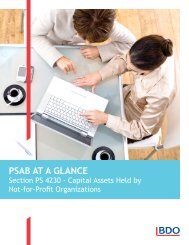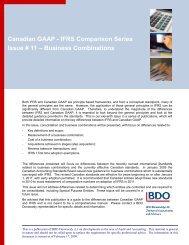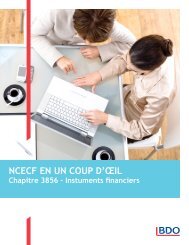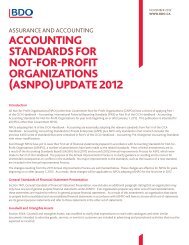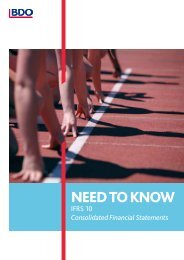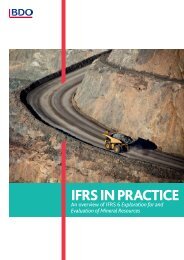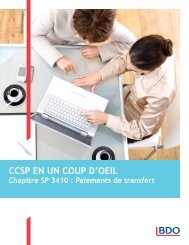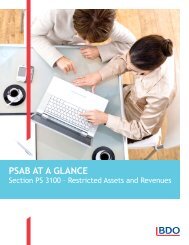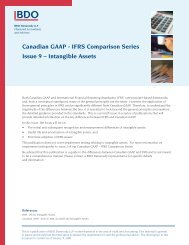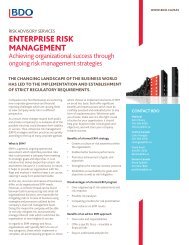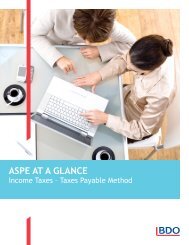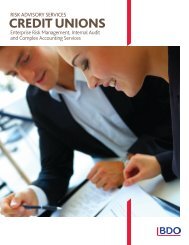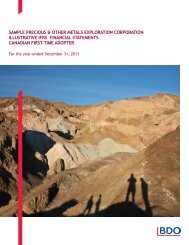need to know / leases - project update - BDO International
need to know / leases - project update - BDO International
need to know / leases - project update - BDO International
You also want an ePaper? Increase the reach of your titles
YUMPU automatically turns print PDFs into web optimized ePapers that Google loves.
LEASES - A PROJECT UPDATE<br />
3<br />
INTRODUCTION<br />
This publication sets out key proposals about the future of lease accounting, based on the most recent discussions of the<br />
IASB and the FASB during their joint <strong>project</strong> <strong>to</strong> revise the accounting requirements. If, as appears likely, the proposals are<br />
finalised on the basis of decisions taken <strong>to</strong> date, a wide range of entities will be affected. In summary:<br />
Lessees<br />
––<br />
Lessees would record assets and liabilities for a wide range of <strong>leases</strong> that are currently not recognised on balance sheet<br />
––<br />
For <strong>leases</strong> of items that are currently accounted for as operating <strong>leases</strong>, except for <strong>leases</strong> of real estate, the single amount<br />
currently included within operating results in the income statement will be split in<strong>to</strong> operating and finance components<br />
––<br />
For <strong>leases</strong> of real estate, although assets and liabilities will be recognised on balance sheet, the lease expense recognised<br />
in profit or loss will continue <strong>to</strong> be on the same basis as under IAS 17 Leases, in most cases resulting in a constant expense<br />
over the lease term.<br />
Lessors<br />
––<br />
For many <strong>leases</strong> except most <strong>leases</strong> of real estate, lessors would adopt a ‘receivable and residual’ approach, with the leased<br />
asset being partially derecognised and a separate lease receivable being recognised<br />
––<br />
For <strong>leases</strong> of real estate, in many cases an approach similar <strong>to</strong> operating lease accounting in accordance with IAS 17 would<br />
be retained.<br />
For some entities, the effect on their financial statements will be very significant, with this extending <strong>to</strong> include not only the<br />
statement of financial position (or balance sheet) but also their comprehensive income and cash flow statements. Although<br />
a finalised accounting standard is not expected <strong>to</strong> be effective on a manda<strong>to</strong>ry basis before 2015, we now <strong>know</strong> enough<br />
about the IASB’s tentative decisions <strong>to</strong> have a fairly clear picture of the revised proposals. Given the extent of outreach and<br />
discussion with constituents, it appears likely that the revised exposure draft will contain many proposals that will be taken<br />
forward.<br />
Consequently, entities should start <strong>to</strong> assess the effect of the proposals on their financial statements, and in particular the<br />
consequent effect on related arrangements including:<br />
––<br />
Lending agreements, including key ratios and covenants<br />
––<br />
Employee remuneration arrangements, including bonus schemes linked <strong>to</strong> reported profits and share-based payments; and<br />
––<br />
Inves<strong>to</strong>r communications.<br />
The revised exposure draft is expected <strong>to</strong> be issued before the end of 2012, with a comment period of 120 days.



